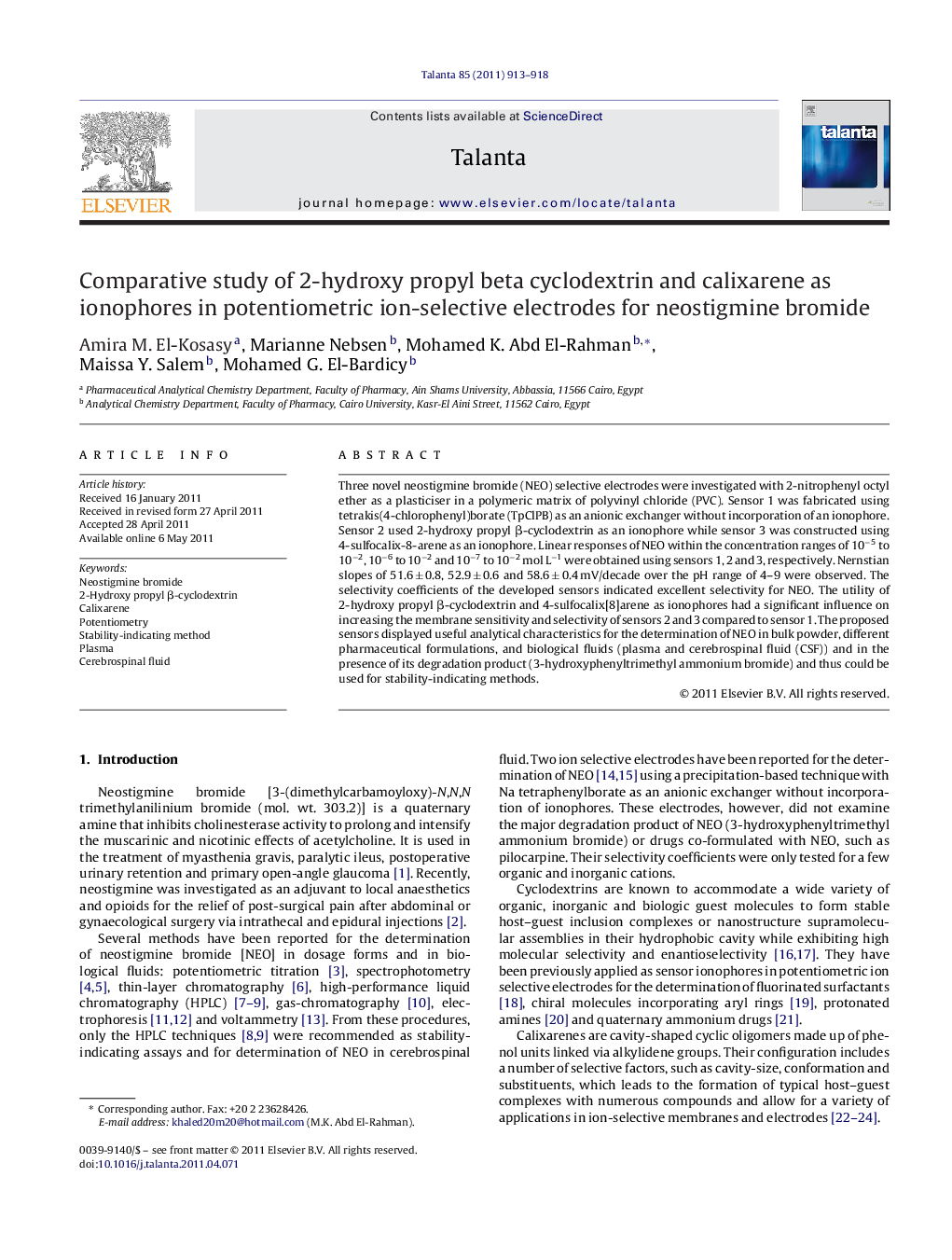| Article ID | Journal | Published Year | Pages | File Type |
|---|---|---|---|---|
| 1242356 | Talanta | 2011 | 6 Pages |
Three novel neostigmine bromide (NEO) selective electrodes were investigated with 2-nitrophenyl octyl ether as a plasticiser in a polymeric matrix of polyvinyl chloride (PVC). Sensor 1 was fabricated using tetrakis(4-chlorophenyl)borate (TpClPB) as an anionic exchanger without incorporation of an ionophore. Sensor 2 used 2-hydroxy propyl β-cyclodextrin as an ionophore while sensor 3 was constructed using 4-sulfocalix-8-arene as an ionophore. Linear responses of NEO within the concentration ranges of 10−5 to 10−2, 10−6 to 10−2 and 10−7 to 10−2 mol L−1 were obtained using sensors 1, 2 and 3, respectively. Nernstian slopes of 51.6 ± 0.8, 52.9 ± 0.6 and 58.6 ± 0.4 mV/decade over the pH range of 4–9 were observed. The selectivity coefficients of the developed sensors indicated excellent selectivity for NEO. The utility of 2-hydroxy propyl β-cyclodextrin and 4-sulfocalix[8]arene as ionophores had a significant influence on increasing the membrane sensitivity and selectivity of sensors 2 and 3 compared to sensor 1. The proposed sensors displayed useful analytical characteristics for the determination of NEO in bulk powder, different pharmaceutical formulations, and biological fluids (plasma and cerebrospinal fluid (CSF)) and in the presence of its degradation product (3-hydroxyphenyltrimethyl ammonium bromide) and thus could be used for stability-indicating methods.
